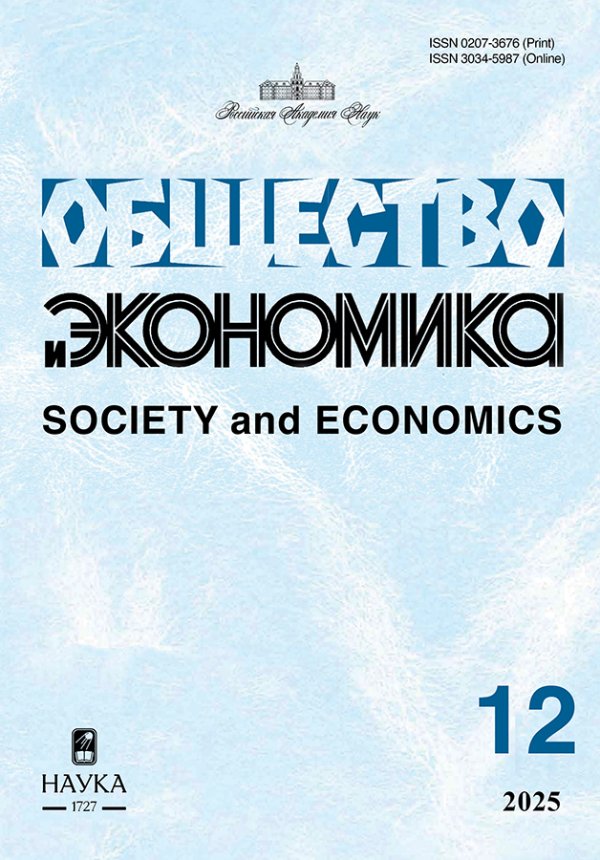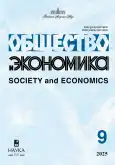Current Trends in the Management of Cash Holdings in Russian Public Companies in the Context of the Precautionary Motive
- Authors: Lutsenko S.1,2
-
Affiliations:
- Center for Economic Analysis of Law and Problems of Law Enforcement, Institute of Economic Strategies
- Expert Council of the State Duma Defense Committee of the Federal Assembly of the Russian Federation
- Issue: No 9 (2025)
- Pages: 48-57
- Section: FINANCIAL POLICY
- URL: https://bakhtiniada.ru/0207-3676/article/view/313907
- DOI: https://doi.org/10.31857/S0207367625090043
- ID: 313907
Abstract
About the authors
S. Lutsenko
Center for Economic Analysis of Law and Problems of Law Enforcement, Institute of Economic Strategies; Expert Council of the State Duma Defense Committee of the Federal Assembly of the Russian Federation
Email: scorp_ante@rambler.ru
Moscow, Russian Federation; Moscow, Russian Federation
References
- Луценко С.И. Инвестиции, ликвидность акций и качество управления // Стратегические решения и риск-менеджмент номер. 2024. № 4. С. 300–307.
- Acharya V., Steffen S. The Risk of Being a Fallen Angel and the Corporate Dash for Cash in the Midst of COVID. Review of Corporate Finance Studies. 2020. Vol. 9. P. 430–471.
- Amihud Y. Illiquidity and Stock returns: Cross-section and Time-series Effects. Working paper. Stern School of Business, New York University. 2000. P. 1–48.
- Andres C., Doumet M., Fernau E., Theissen E. The Lintner model revisited: Dividends versus total payouts // Journal of Banking & Finance. 2015. Vol. 55. P. 56–69.
- Barry C., Brown S. Differential Information and the Small Firm Effect // Journal of Financial Information. 1984. Vol. 13. P. 283–294.
- Barry J., Campello M., Graham J., Ma Y. Corporate Flexibility in a Time of Crisis // Journal of Financial Economics. 2022. Vol. 144. P. 780–806.
- Bates T., Kahle K., Stulz R. Why Do U.S. Firms Hold So Much More Cash than They Used To? // The Journal of Finance. 2009. Vol. 64. P. 1985–2021.
- DeAngelo H., DeAngelo L., Skinner D. Are dividends disappearing? Dividend concentration and the consolidation of earnings // Journal of Financial Economics. 2004. Vol. 72. P. 425–456.
- Fahlenbrach R., Rageth K., Stulz R. How Valuable is Financial Flexibility when Revenue Stops? Evidence from the COVID-19 Crisis // Review of Financial Studies. 2021. Vol. 34. P. 5474–5521.
- Frank M., Goyal V. Testing the pecking order theory of capital structure // Journal of Financial Economics. 2003. Vol. 67. P. 217–248.
- Gamba A., Wang Z. Payout Dynamics. Working paper. Warwick Business School. 2024. P. 1–66.
- Graham J., Harvey C. The Theory and Practice of Corporate Finance: Evidence from the Field // Journal of Financial Economics. 2001. Vol. 60. P. 187–243.
- Holmstrom B., Tirole J. Market Liquidity and Performance Monitoring // Journal of Political Economy. 1993. Vol. 101. P. 678–709.
- Keynes J. The General Theory of Employment, Interest and Money. London. MacMillan. 1936. P. 403.
- Leary M., Roberts M. Do Firms Rebalance Their Capital Structure? //Journal of Finance. 2005. Vol. 60. P. 2575–2619.
- Leary M., Michaely R. Determinants of Dividend Smoothing: Empirical Evidence // The Review of Financial Studies. 2011.Vol. 24. P. 3197–3249.
- Liu T., Shivdasani A. Financial Flexibility and Capital Structure. Working paper. Kenan-Flagler Business School, University of North Carolina. 2018. P. 1–47.
- Ramelli S.,Wagner A. Feverish Stock Price Reactions to COVID-19 // Review of Corporate Finance Studies. 2020. Vol. 9. P. 622–655.
- Skinner D. The evolving relation between earnings, dividends, and stock repurchases // Journal of Financial Economics. 2008. Vol. 87. P. 582–609.










